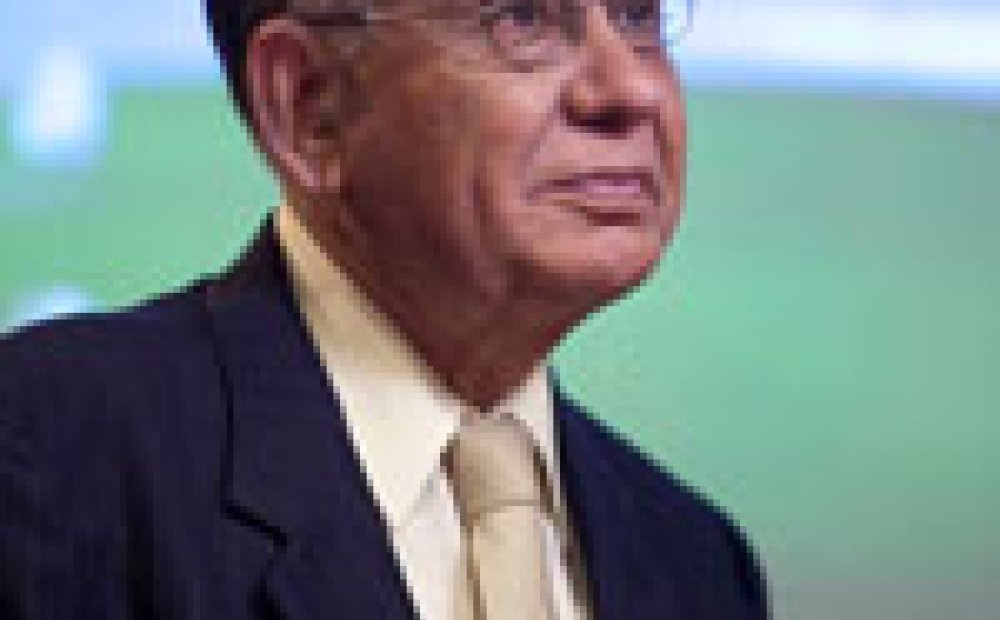Book Event: <i>Memoirs of a Pakistani Economist</i>

Parvez Hasan’s My Life, My Country: Memoirs of a Pakistani Economist is both personal memoir and economic history. It chronicles the author’s life from his pre-Partition childhood to his work with the Pakistani government in the 1960s and subsequently with the World Bank. On May 16, the Asia Program hosted a discussion of Hasan’s new book.
Hasan asserted that for his generation, the creation of Pakistan in 1947 represents the “strongest form of affirmative action.” He recalled, as a child in British India, being struck by the “dominance” that Hindus and Sikhs enjoyed over Muslims. Pakistan’s independence dramatically improved living standards for Muslims, and created “immediate opportunities” for those, like him, who were on the verge of completing their educations. “Young countries make many friends,” he said, which enabled him to receive a scholarship to pursue graduate studies at Yale University.
Soon after receiving his Yale degree, Hasan joined Pakistan’s government. President Ayub Khan, who would rule the country for much of the 1960s, was in office. From his perch as chief economist and later planning secretary for the government of West Pakistan, Hasan witnessed the building of Pakistan’s national institutions. By the end of the 1960s, Pakistan had become a “showcase for development.” Hasan lamented the decline that would soon follow. A bloody civil war in 1971 led to the secession of East Pakistan and the formation of Bangladesh, after which South Asia was plunged into a period of prolonged unrest that would claim the lives of many of the region’s top leaders.
In 1970, Hasan moved to the World Bank. Over his nearly two decades with the bank—he would serve as the top regional economist on East Asia, the Middle East, Europe, and Central Asia—he experienced the rise of East Asia and China, along with the collapse of the Soviet Union. He also watched as Pakistan missed opportunity after opportunity to achieve better economic growth—and particularly its failure to capitalize on export-led development.
Hasan acknowledged the dreadful state in which Pakistan finds itself today. Yet he also highlighted the accomplishments: living standards that are three times better than at independence; a “vibrant, growing” female presence; a free media; a still-untapped civil society; and an active diaspora.
Following Hasan’s presentation, several other economists from South Asia offered comments. Moeen Qureshi, who heads an equity firm and served as Pakistan’s prime minister in 1993, clarified several of the points made in Hasan’s book. China sought to join the World Bank in order to oust Taiwan from its seat on the Bank, he noted, and not only, as Hasan writes, to join one of the international community’s preeminent institutions. Qureshi also argued that while China and South Korea have both attained growth through export-oriented manufacturing, each country has used a different strategy. While China initially looked to grass-roots models, Korea focused on its chaebol model of large, corporate entities.
Praful Patel, a past vice president for South Asia at the World Bank, argued that My Life, My Country is “much too pessimistic” about Pakistan’s future; rapid economic growth is in fact possible. He recalled how in the early 2000s, President Pervez Mushrarraf recruited technocrats to stimulate growth. These civil servants lowered interest rates and enhanced export incentives, triggering booms in consumption and investment. By 2005, these expansionary policies were causing the economy to overheat. Yet Pakistan’s leaders became “overconfident.” They failed to curb demand, tighten credit, or raise interest rates. Inflation soared, and GDP growth plummeted. With sounder economic governance, Patel concluded, Pakistan’s troubles would not be as severe.
Shahid Javed Burki, a Wilson Center Senior Scholar, argued that the country has faced many economic crossroads—and nearly every time “taken the wrong turn.” At critical moments in its history, whether faced with mass influxes of migrants from India, internal unrest, or precarious power transfers from the military to civilians, Pakistan has responded poorly. It has abandoned democracy, resorted to economic mismanagement, and squandered billions of dollars of international aid. Pakistan faces a crossroads today as well, Burki said, and choosing the right path will involve making the security establishment subservient to the legislature, and holding to account those who abuse people’s trust.
What else is needed to make Pakistan into an economic success story? Hasan and his co-panelists offered a series of recommendations. Pakistan should learn from development triumphs around the world. It should better invest in education and in its women, and strive for more equitable balances between defense and development expenditures. Relations must be improved with India. Above all, Pakistan needs better leaders. The “driving force” for a more prosperous Pakistan, Hasan declared, must be an “honest, strong, committed leadership” that discourages conspicuous consumption, promotes meritocracy, and aggressively takes on extremism.
Speakers
Chairman, Advisory Council, Institute of Public Policy, Lahore, Pakistan
Hosted By

Indo-Pacific Program
The Indo-Pacific Program promotes policy debate and intellectual discussions on US interests in the Asia-Pacific as well as political, economic, security, and social issues relating to the world’s most populous and economically dynamic region. Read more
